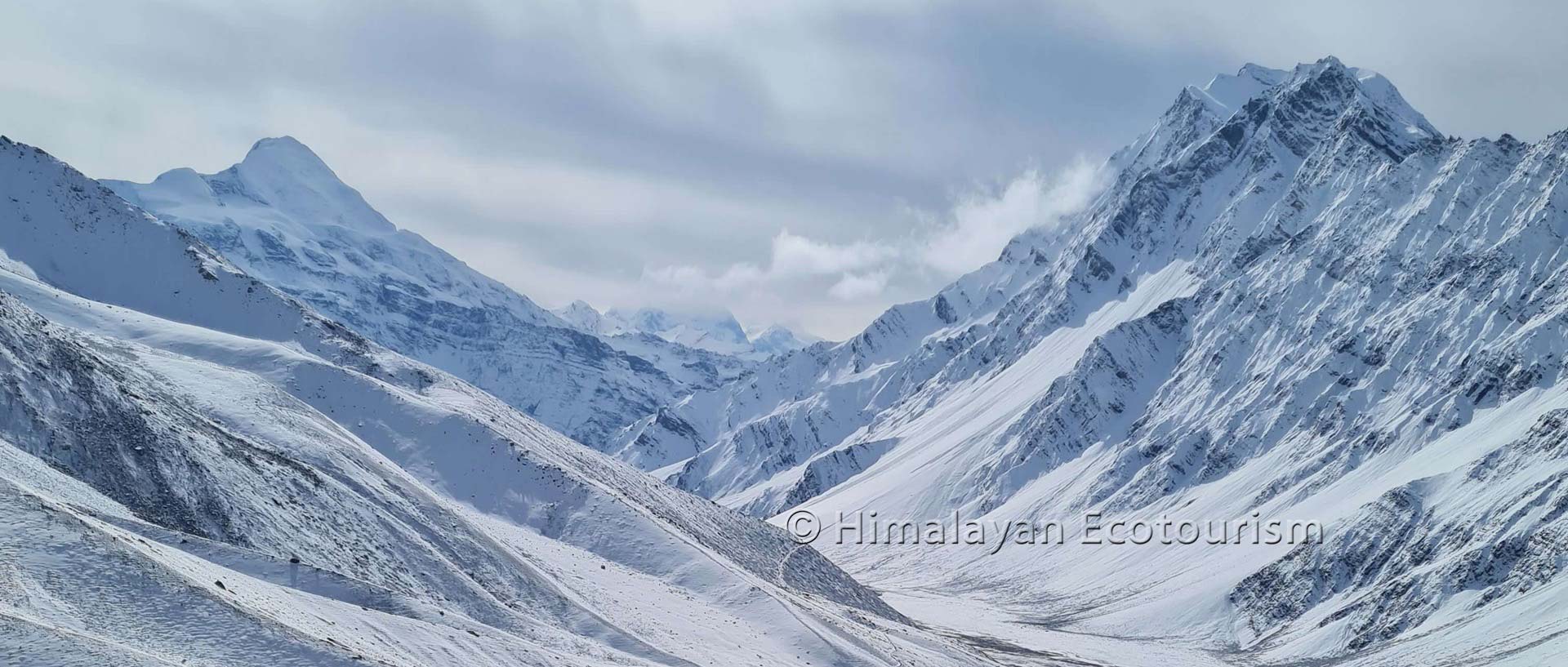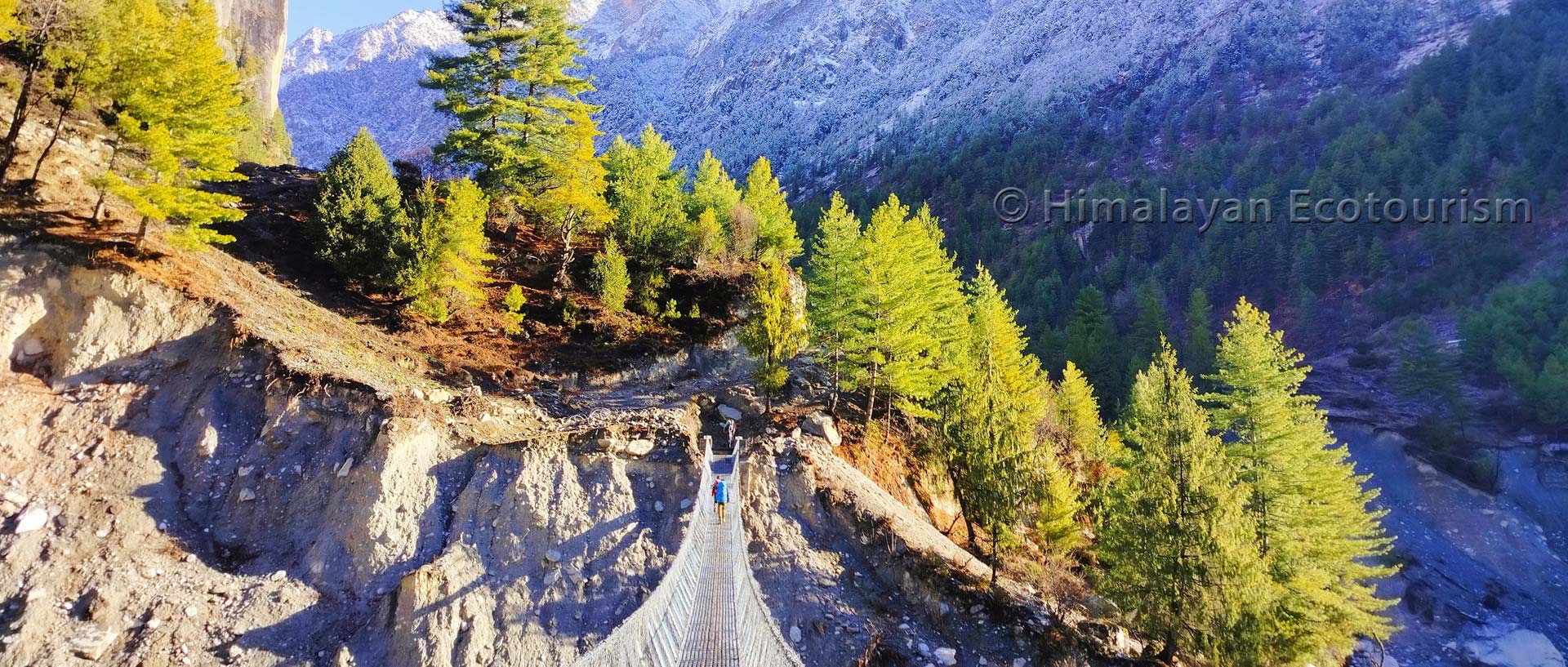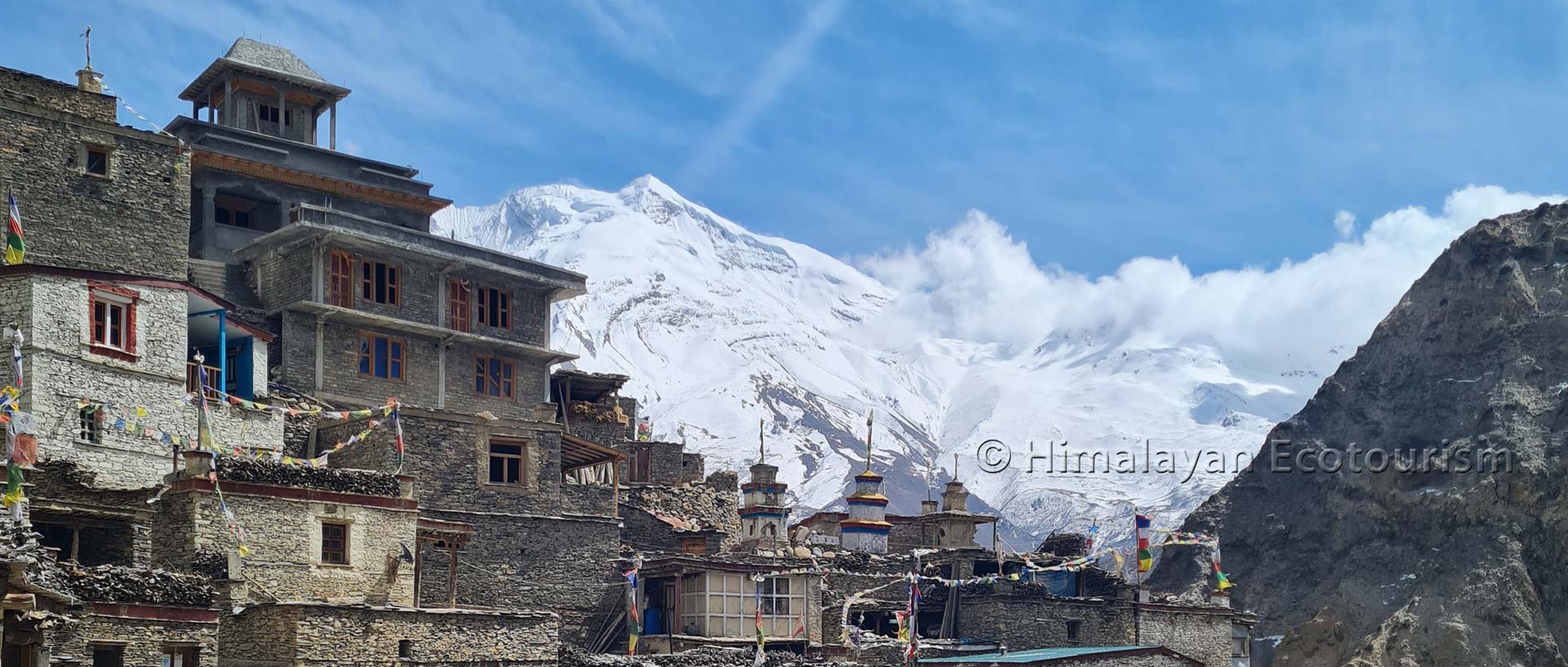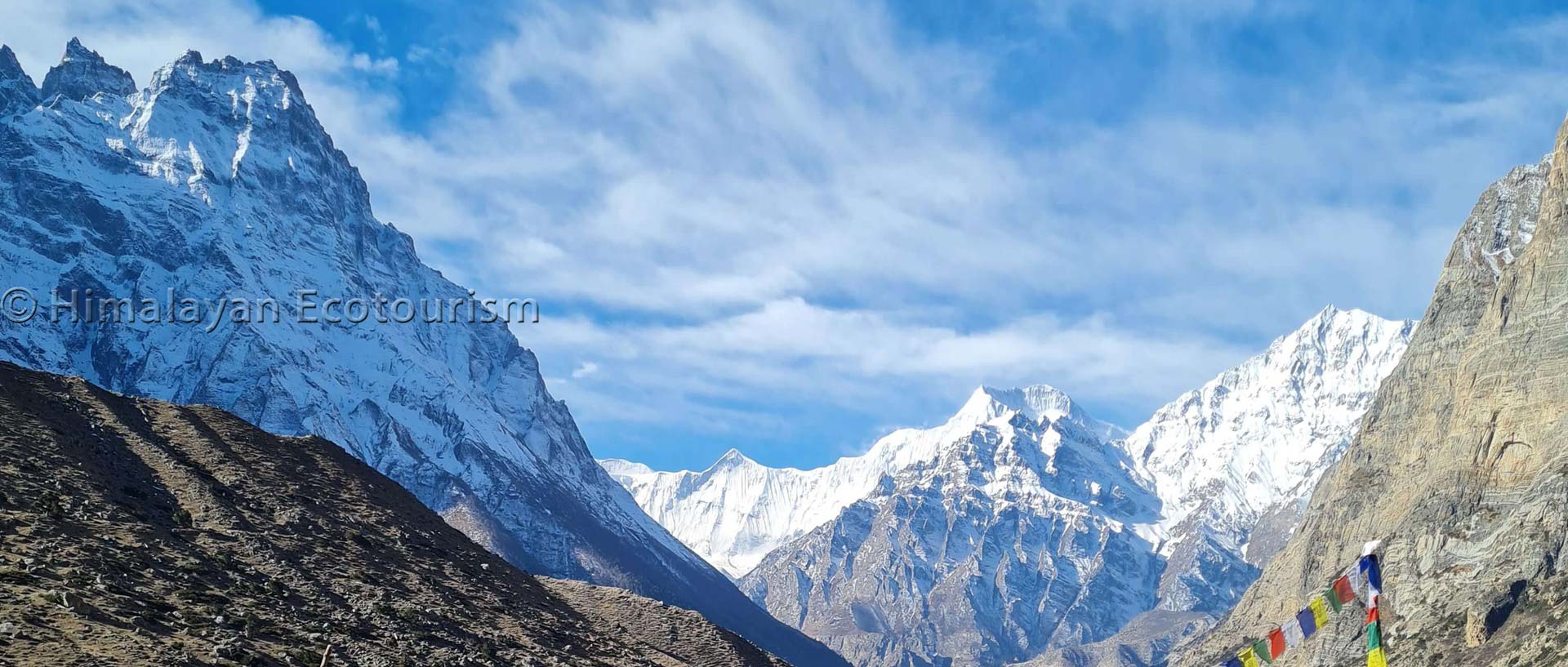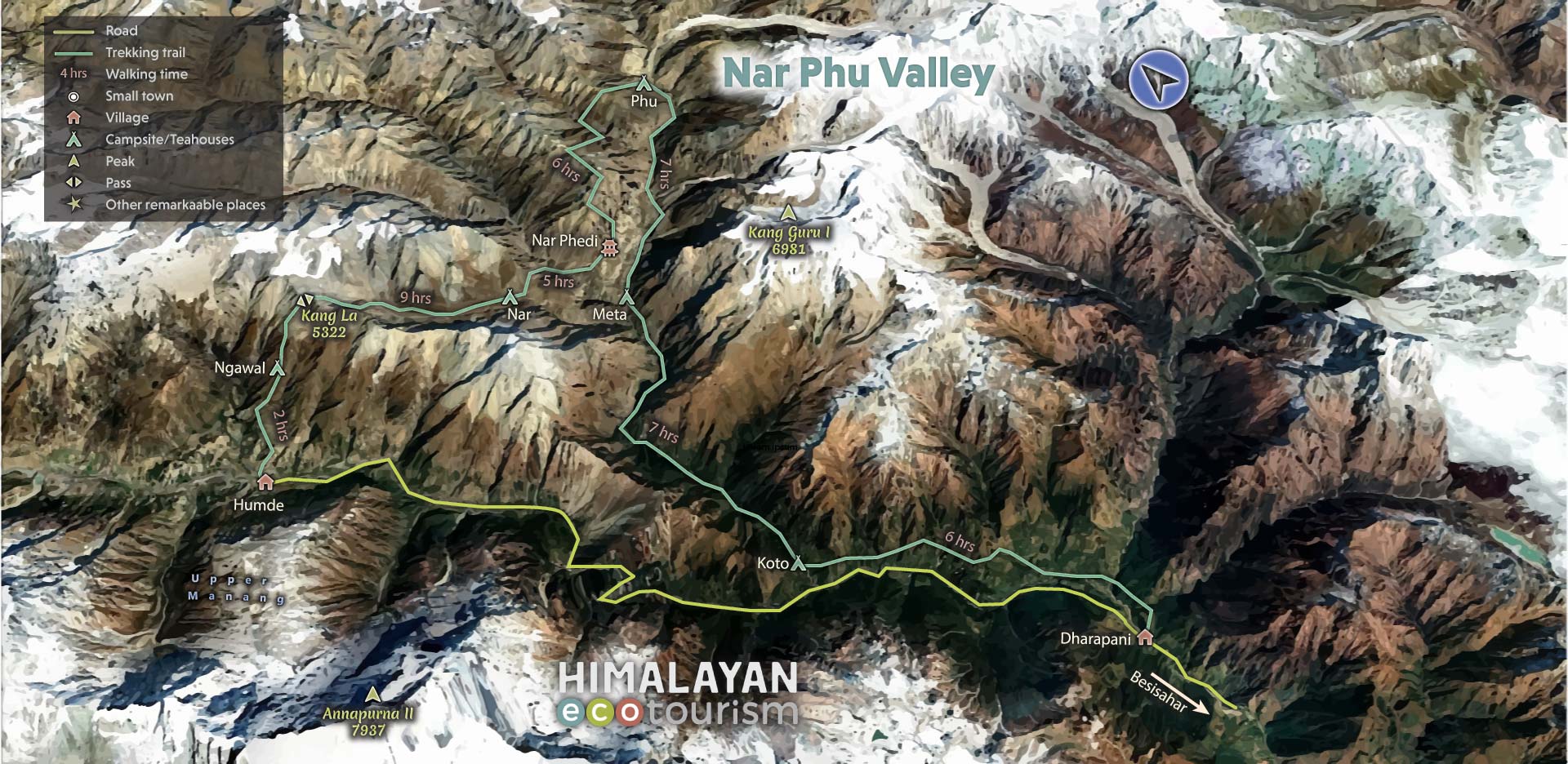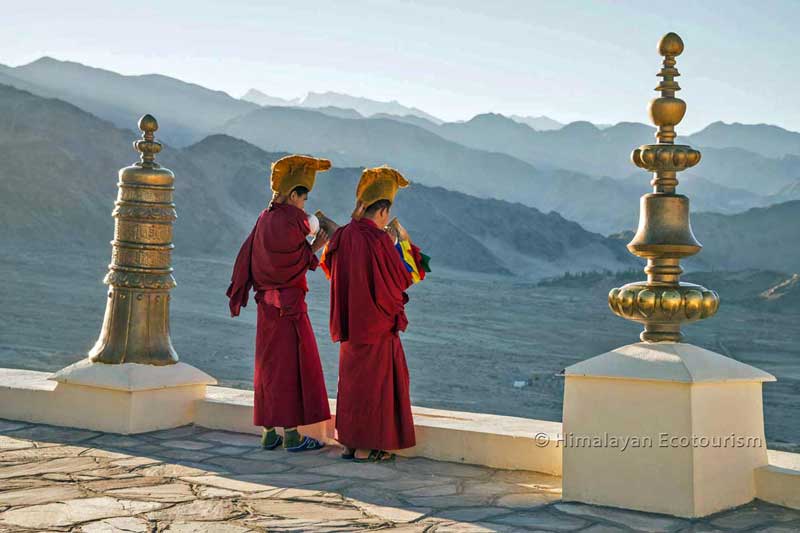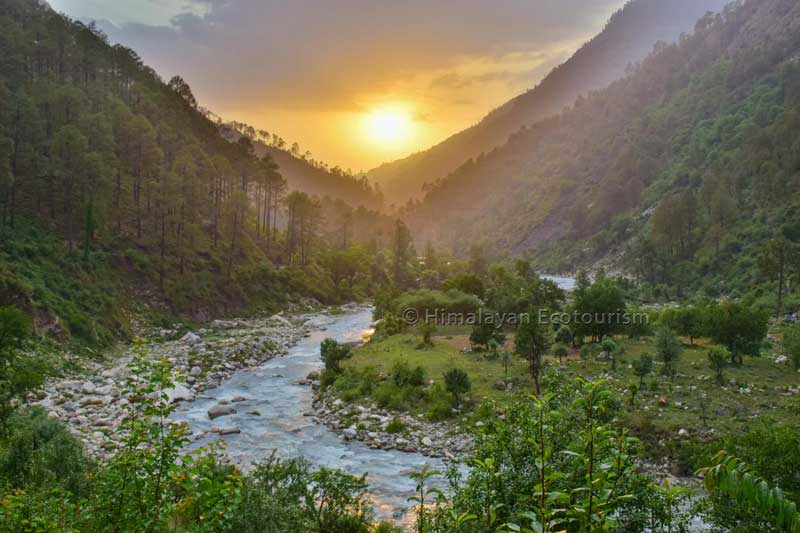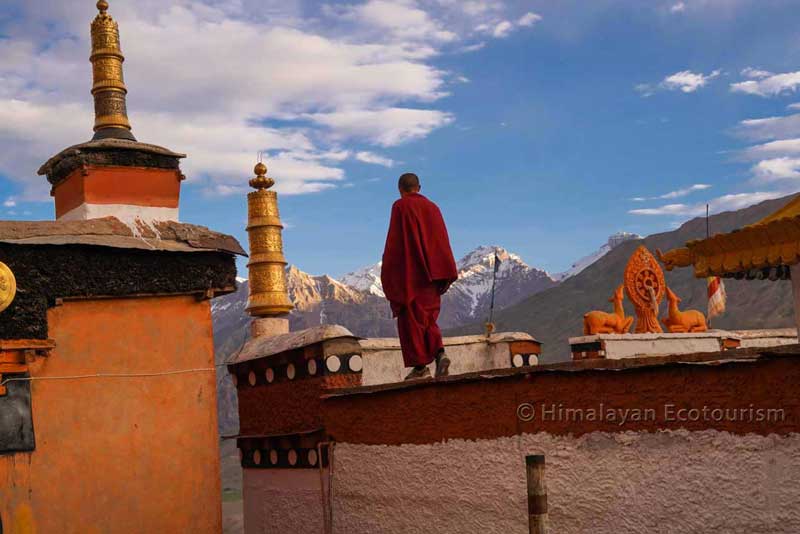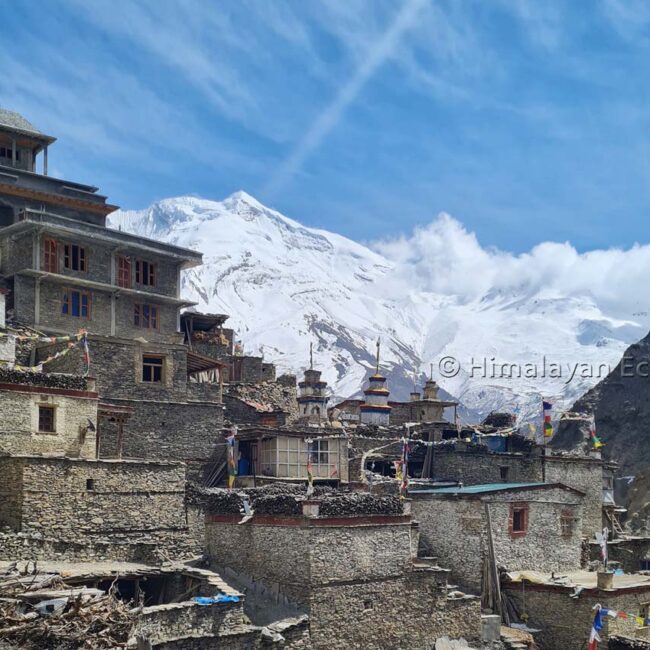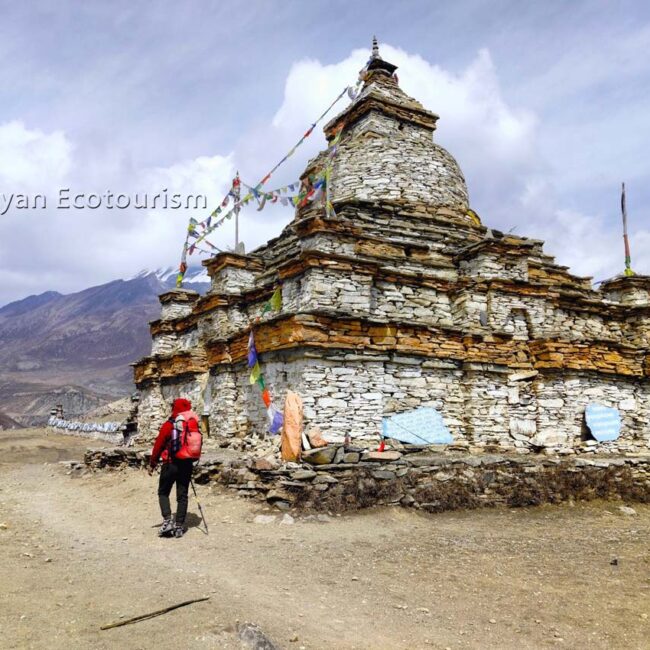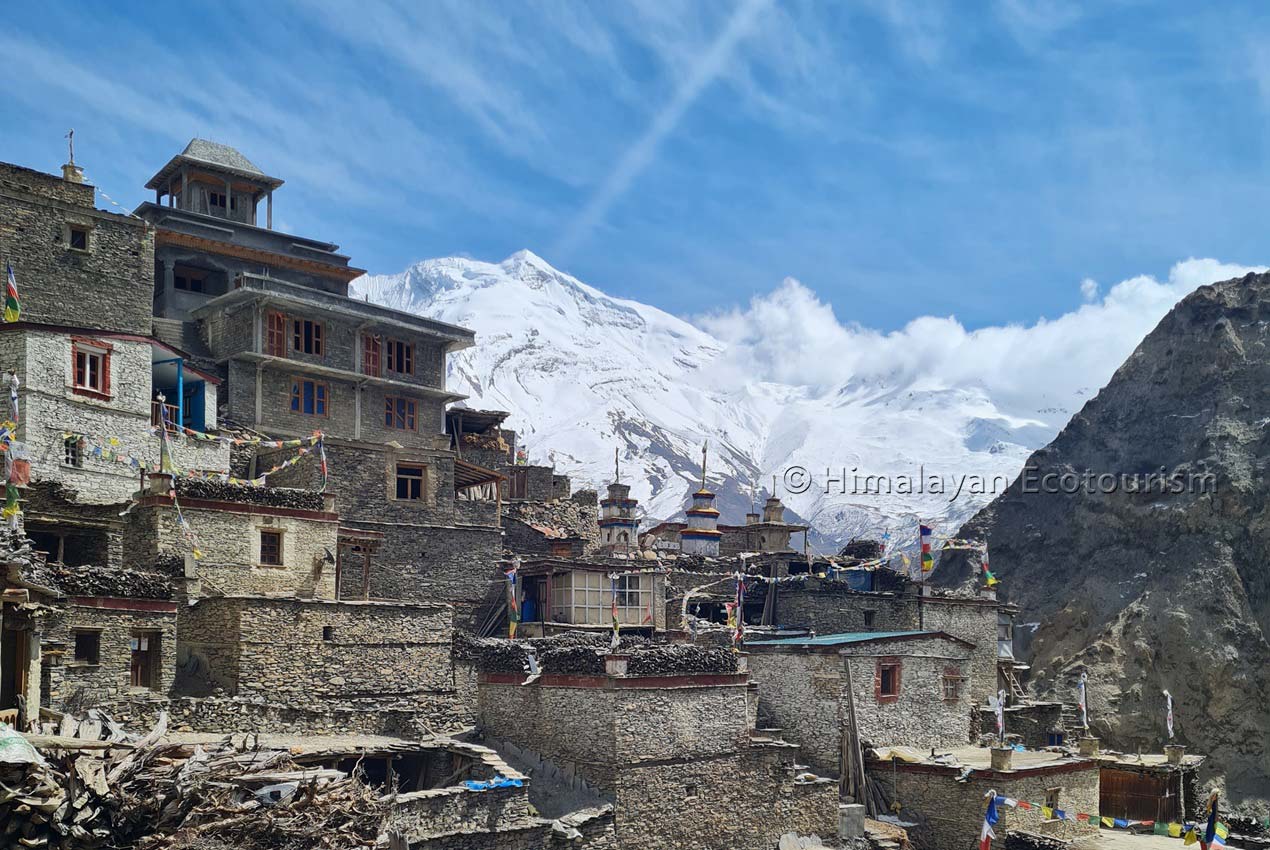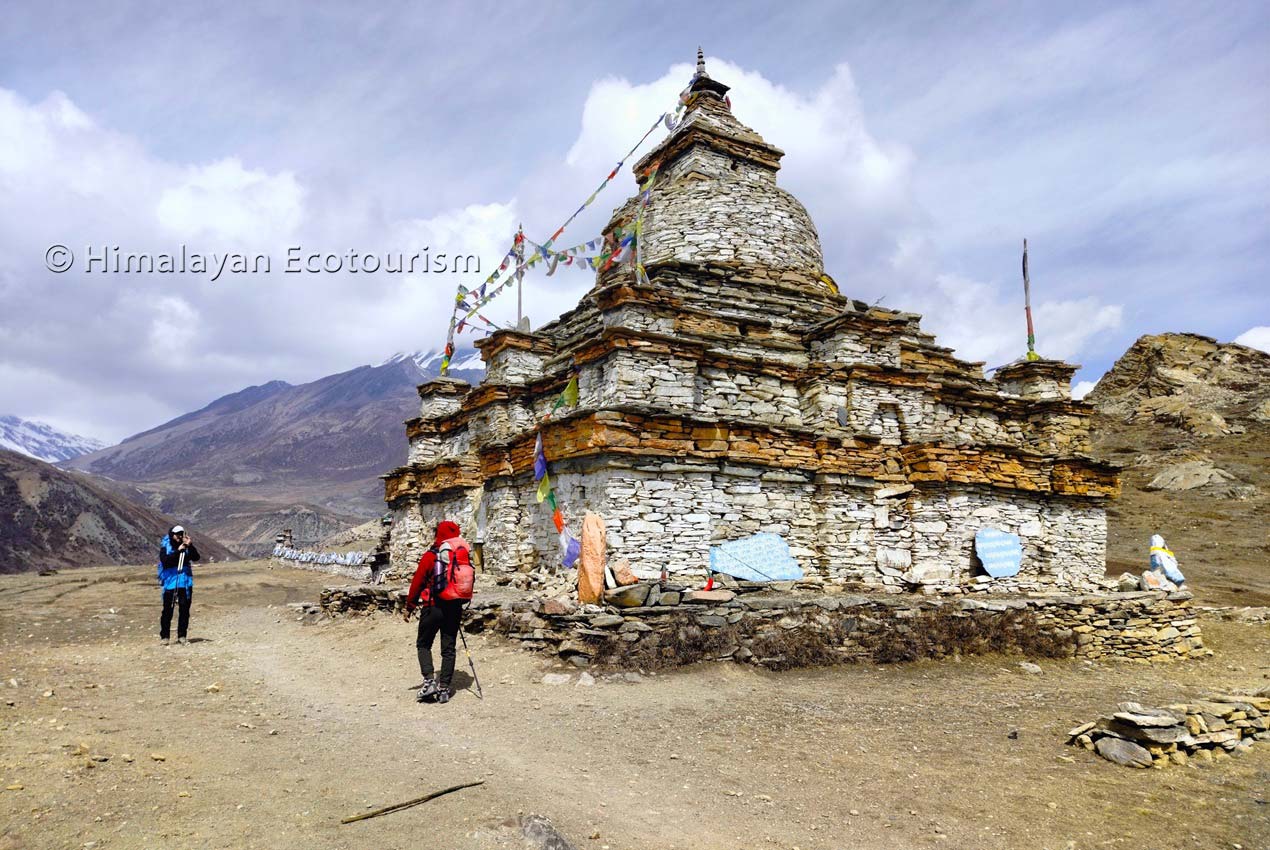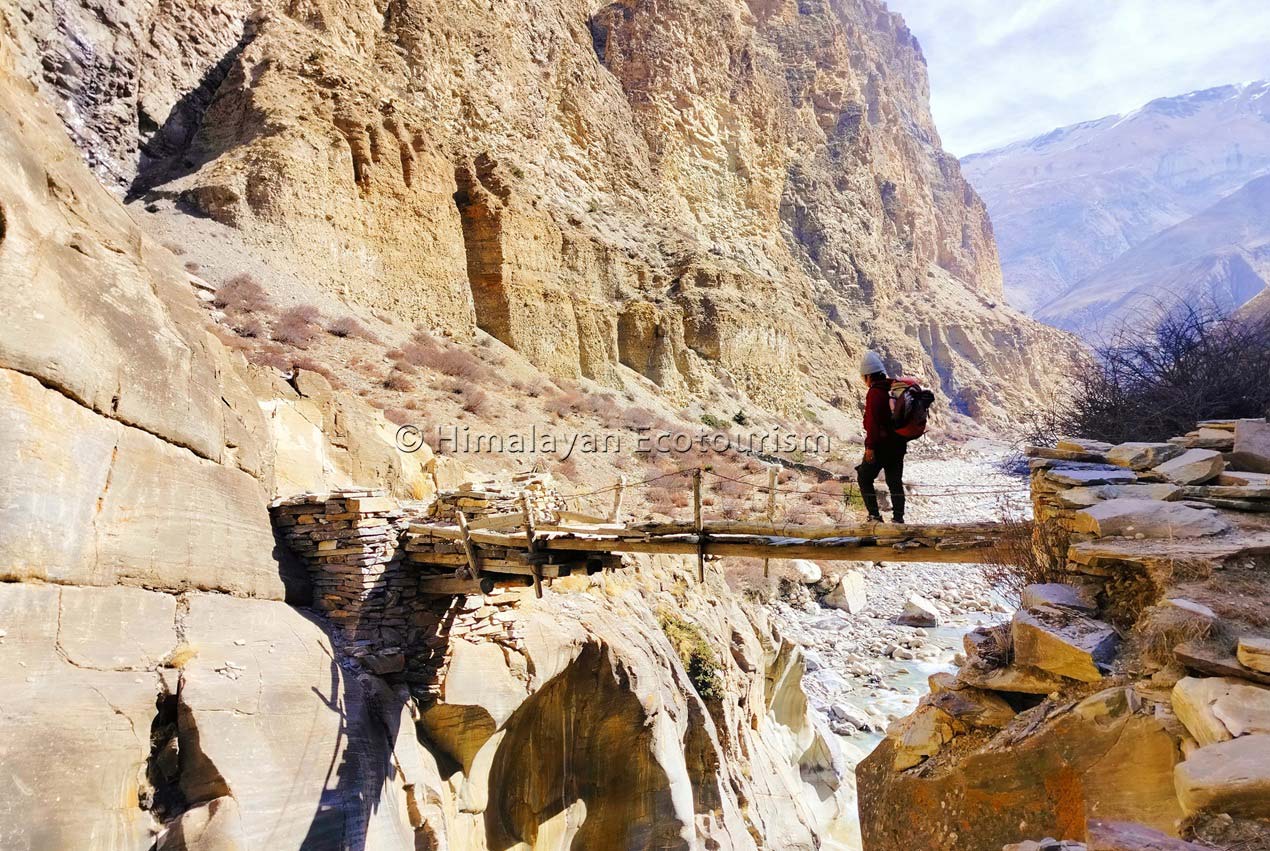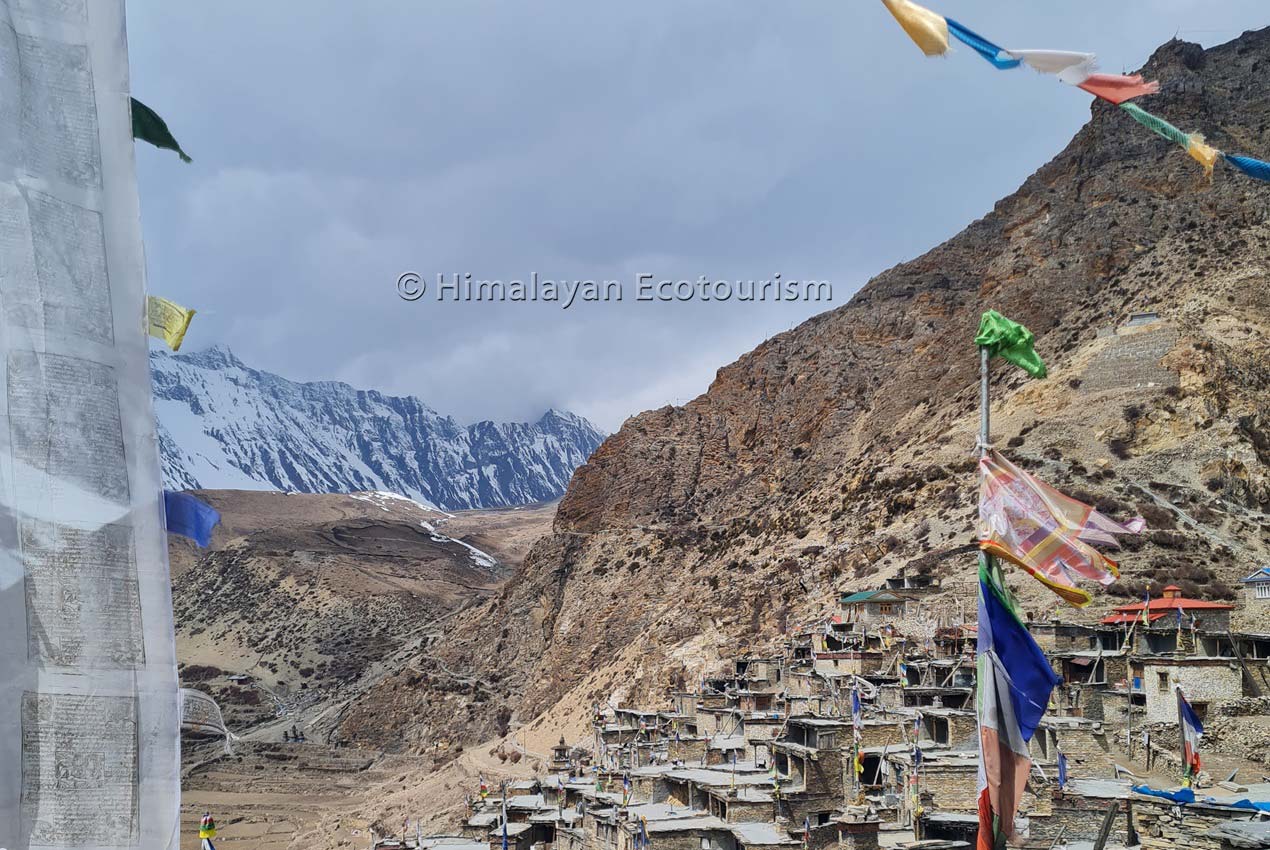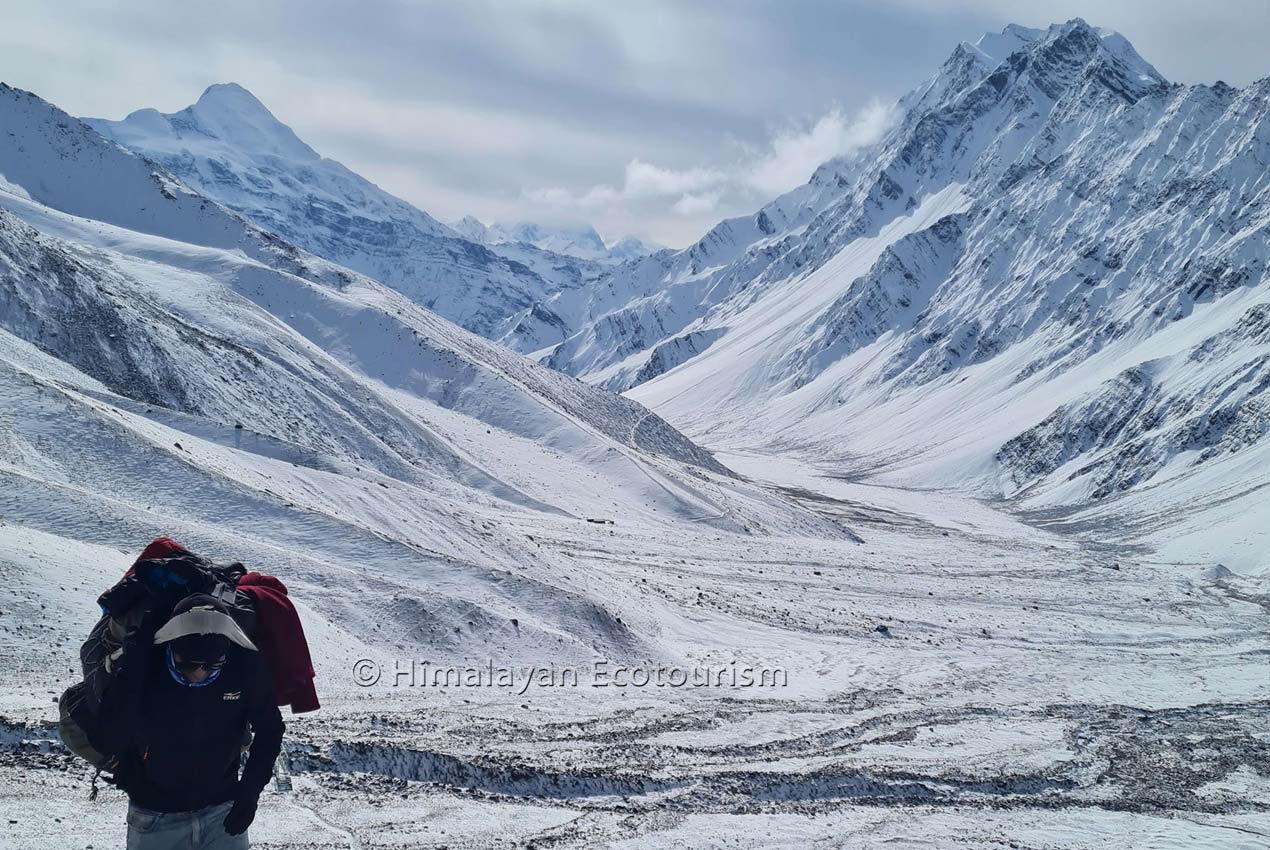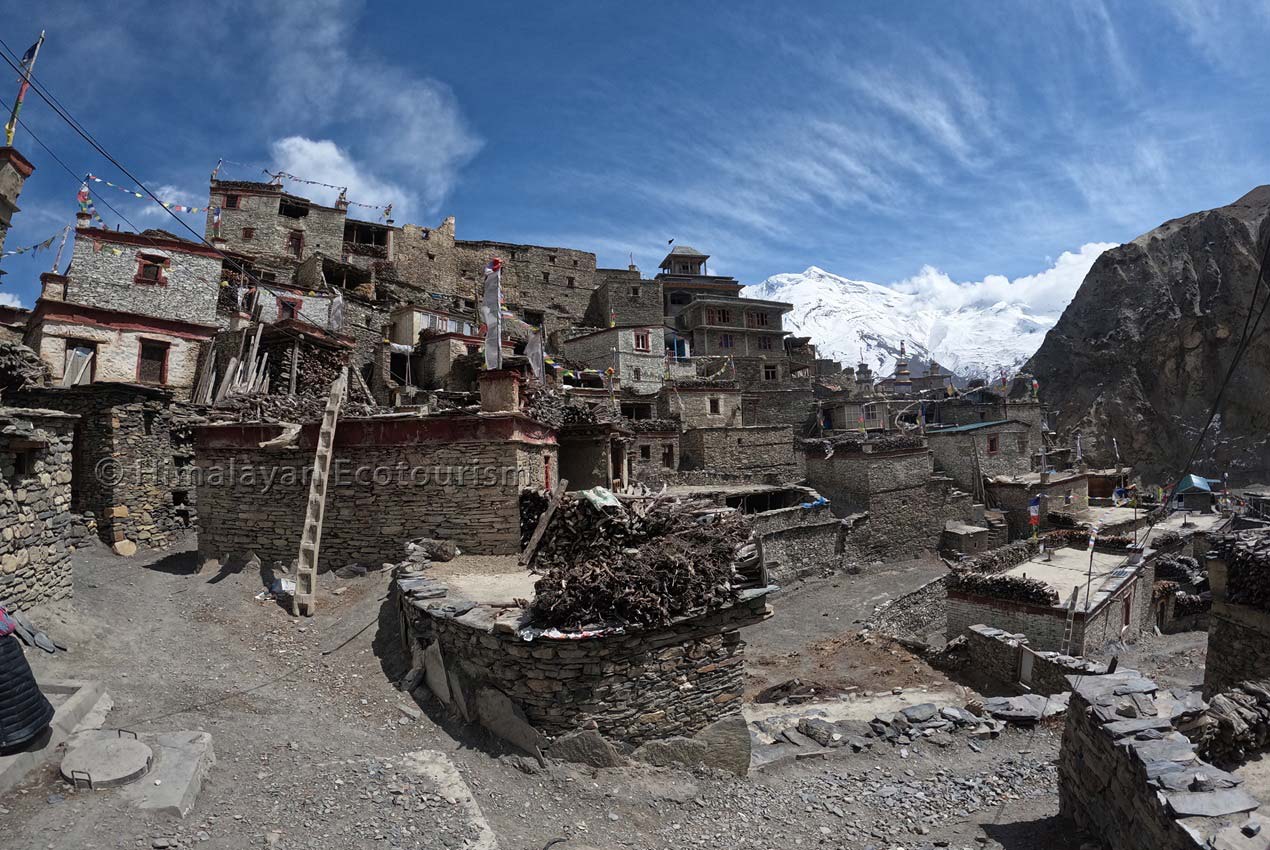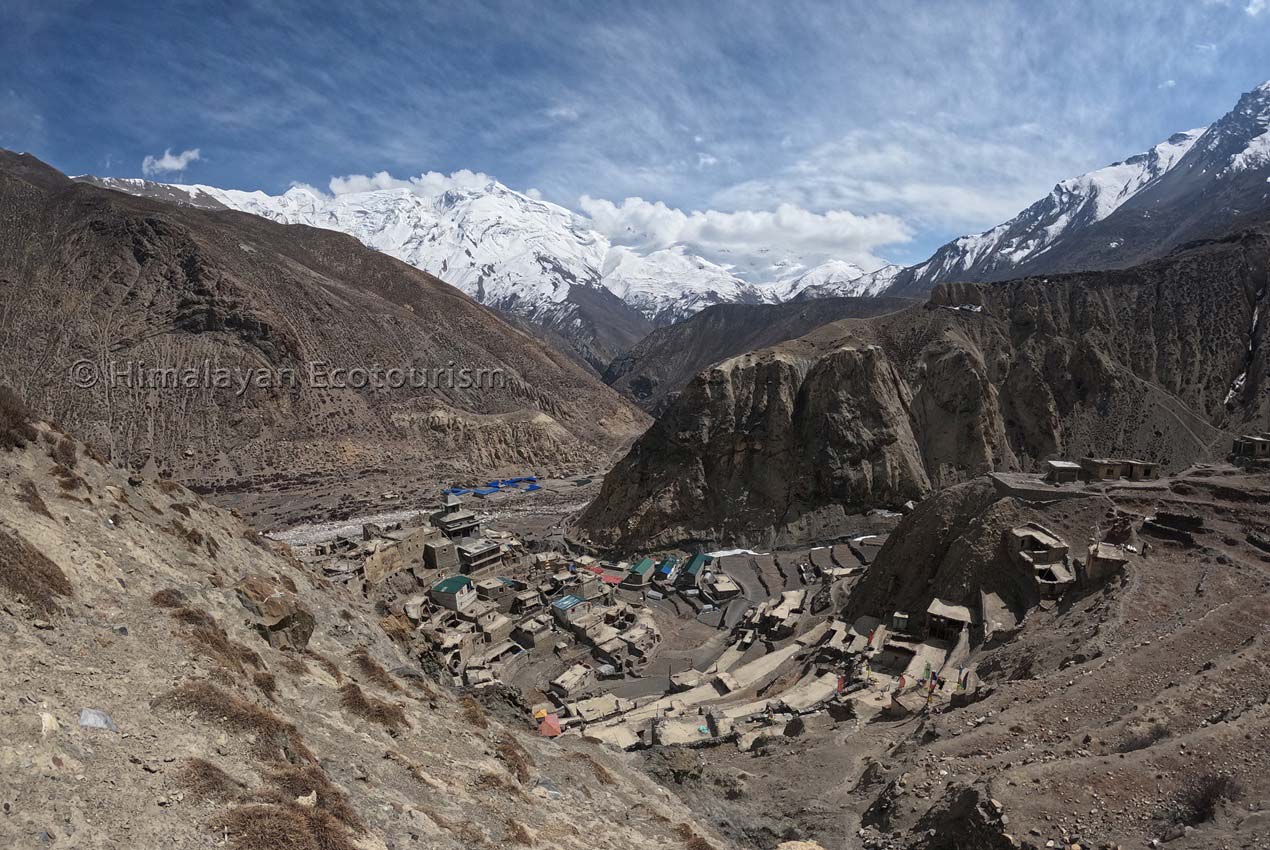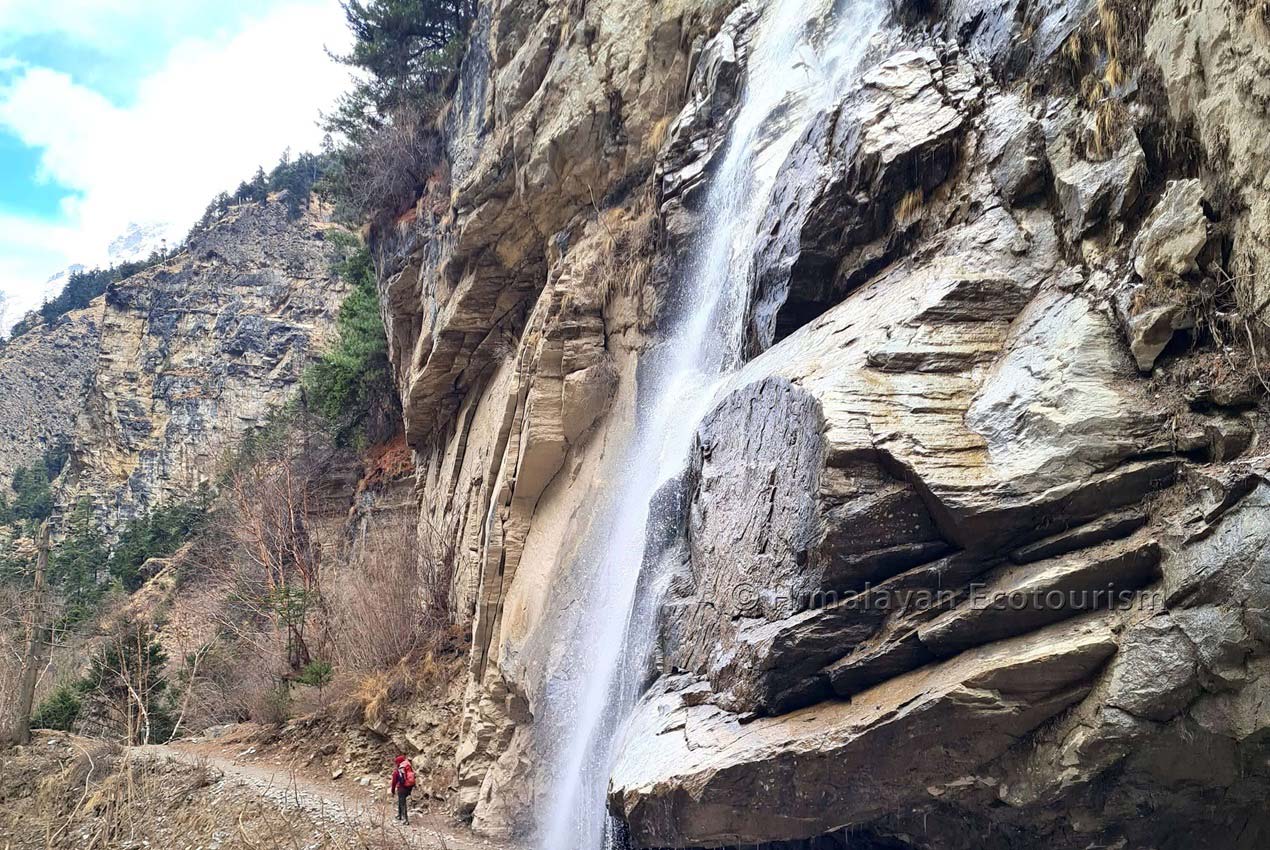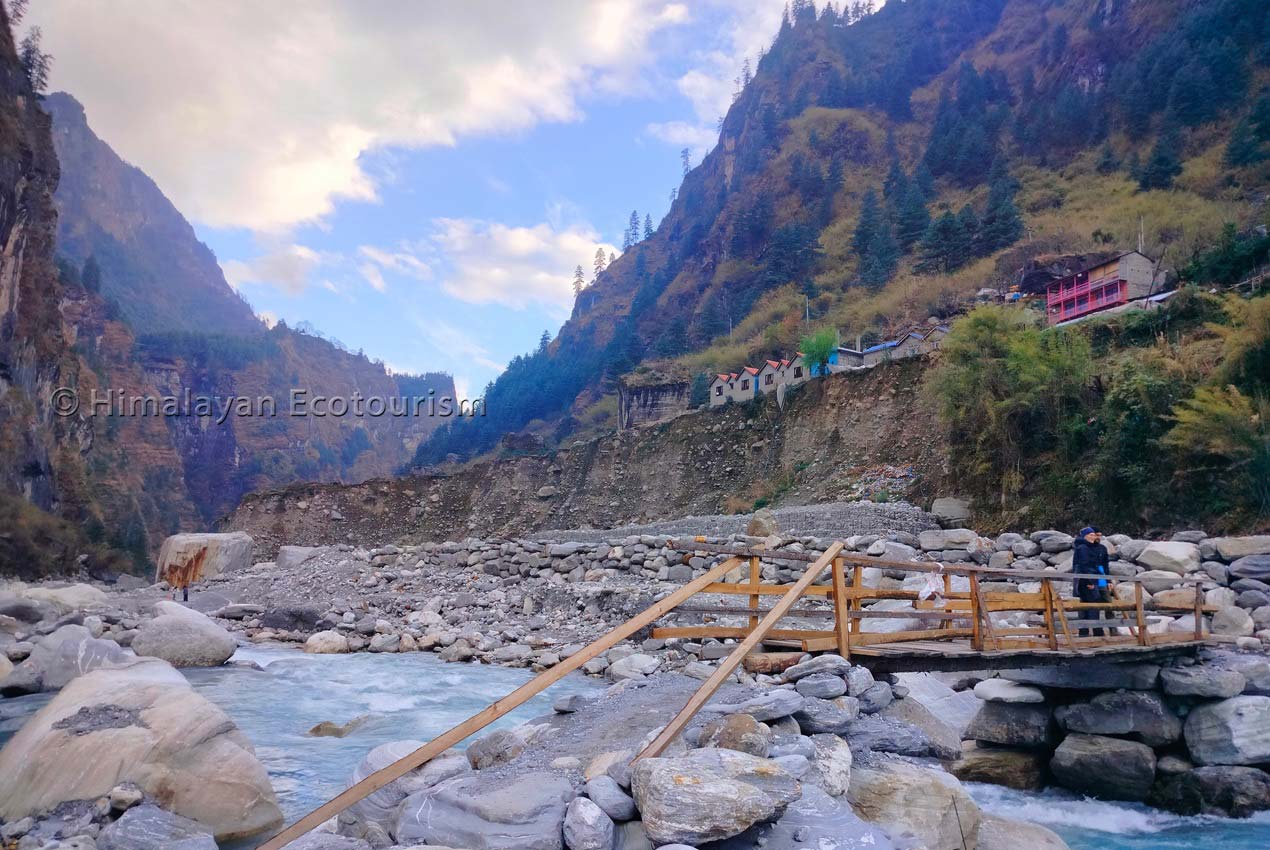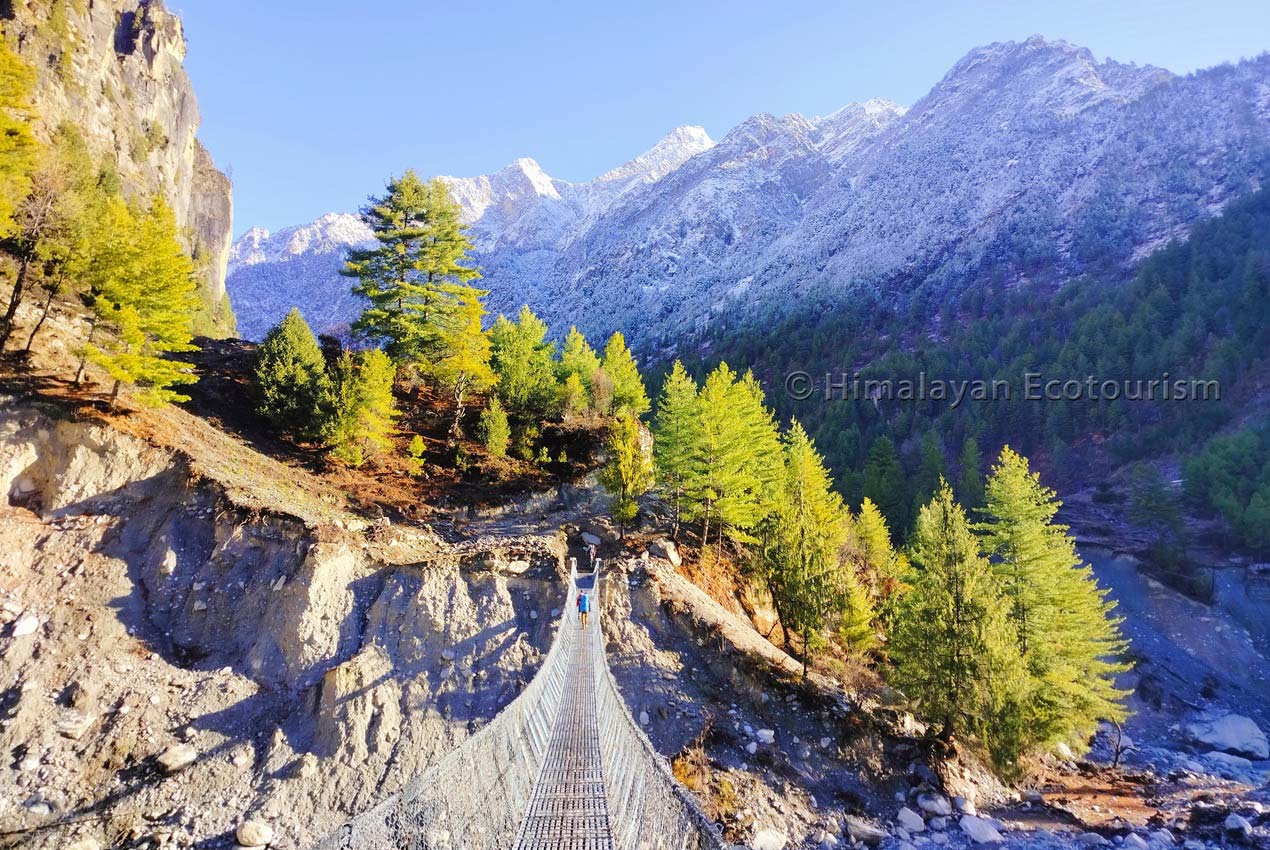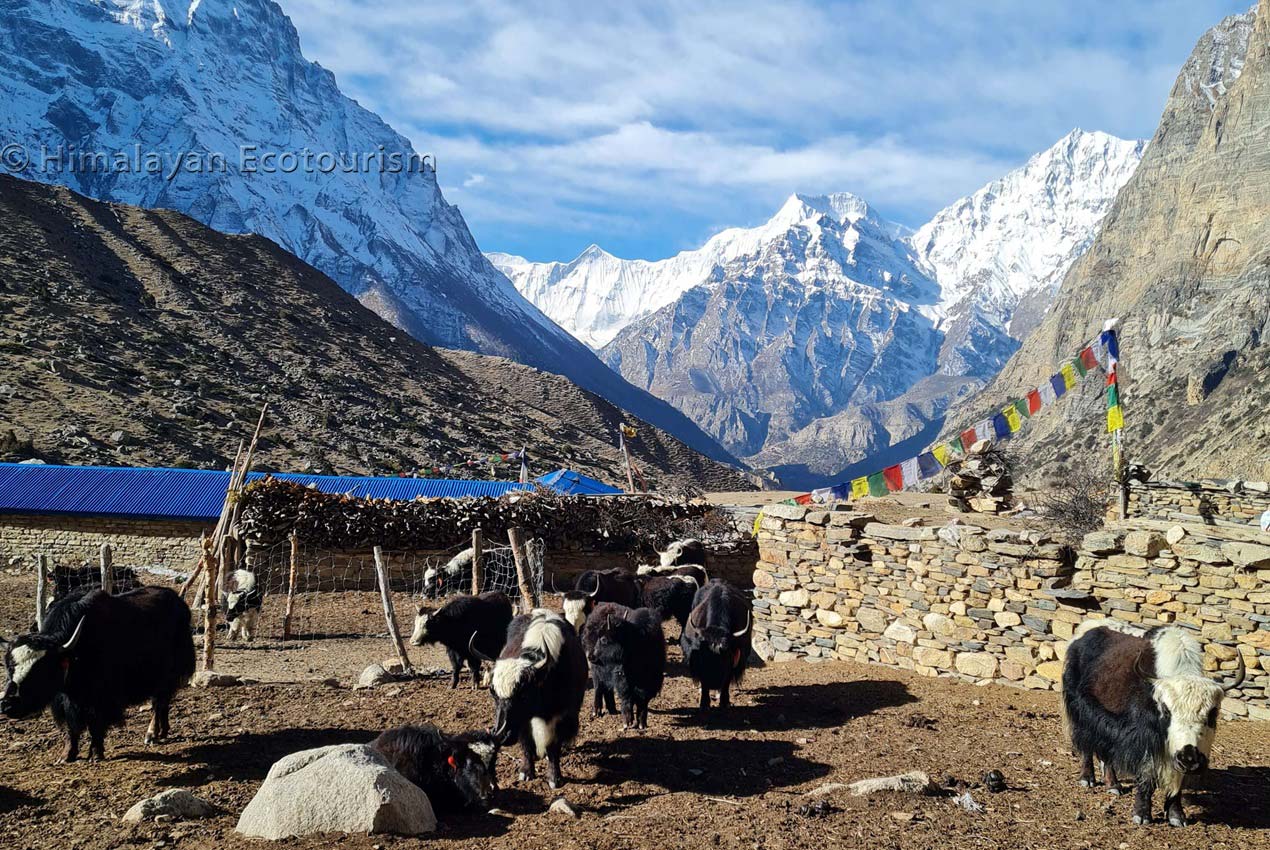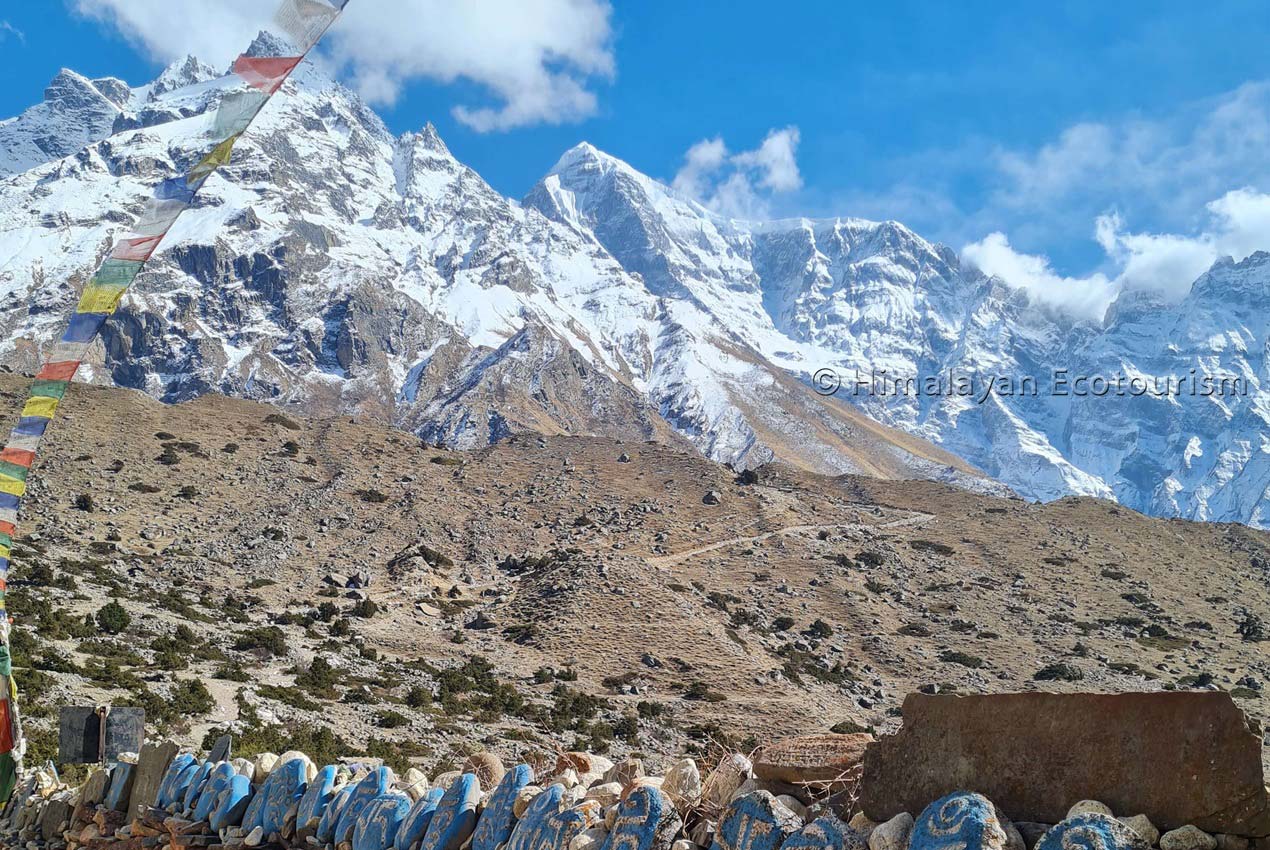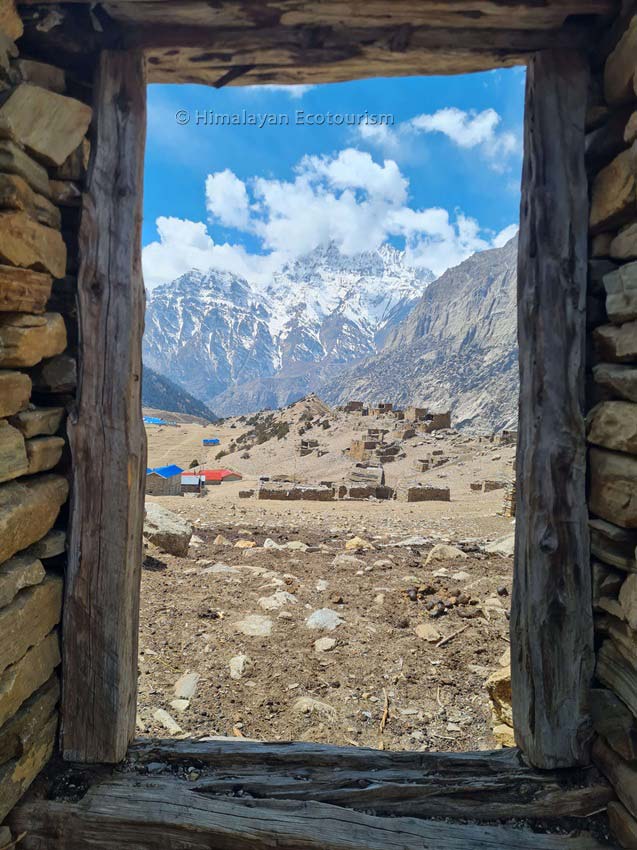Nar Phu Valley Trek
Nar Phu Valley Trek : Nepal’s Hidden Himalayan Adventure
Embark on a thrilling journey through Nepal’s Nar Phu Valley, a secluded gem tucked between the iconic Annapurna and Manaslu ranges, where raw Himalayan beauty and ancient Tibetan Buddhist culture intertwine. Far from the crowded trails of mainstream treks, this off-the-beaten-path adventure beckons international travelers craving authentic experiences, high-altitude challenges, and unparalleled serenity in the heart of the Himalayas.
Uncover the Untouched Wilderness of Nar Phu Valley
Venture into a pristine wilderness where rugged cliffs, narrow gorges, and alpine meadows create a dramatic backdrop. Unlike the bustling Annapurna Circuit, the Nar Phu Valley Trek offers solitude and unspoiled landscapes, making it a haven for seasoned trekkers and adventure enthusiasts. From the trailhead in Dharapani (1,860m), the path diverges at Koto, guiding you into the restricted Nar and Phu Valleys, accessible only with special permits to preserve their cultural and natural purity.

Immerse in Ancient Tibetan Buddhist Culture
Step into a world where time stands still, as the Nar and Phu villages preserve a rich Tibetan heritage untouched by modernity. Home to ethnic Tibetans and Bhotia communities, these settlements offer a glimpse into a lifestyle steeped in Buddhist traditions. Visit iconic monasteries like Tashi Lhakhang Gompa in Phu, believed to be one of the last constructed by Lama Karma Sonam Rinpoche, and Nar Phedi Monastery, where you can stay overnight and witness monks’ daily rituals. Colorful prayer flags, mani walls, and chortens dot the trail, creating a spiritual ambiance that resonates deeply with cultural explorers.
Conquer High-Altitude Challenges at Kang La Pass
Test your endurance by ascending to Kang La Pass (5,322m), the trek’s highest point, where breathtaking panoramic views of Annapurna II (7,937m), Gangapurna (7,455m), Tilicho Peak (7,134m), and Himlung Himal (7,126m) await. This challenging climb, surrounded by snow-capped peaks and glacial vistas, rewards trekkers with a sense of triumph and awe-inspiring scenery. For those seeking an extended adventure, combine the trek with Thorong La Pass (5,416m) or a visit to Tilicho Lake, for an epic Himalayan odyssey.
Marvel at Diverse Himalayan Landscapes
Traverse a kaleidoscope of terrains, from lush rhododendron forests and terraced fields to arid, desert-like highlands reminiscent of the Tibetan Plateau. Along the way, encounter unique rock formations, cascading waterfalls, and grazing yaks, with the opportunity to spot rare wildlife like Himalayan Thar and even the elusive snow leopards adding to the allure. The trail’s biodiversity, within the Annapurna Conservation Area, includes vibrant flora and fauna, such as the Himalayan monal and blue sheep, making every step a visual feast for nature lovers.
Experience Authentic Village Life
Connect with the warm hospitality of Nar and Phu’s locals, who maintain age-old traditions of farming and animal husbandry. In Phu Village (4,150m), observe artisans spinning yak wool or grinding mustard seeds, while in Nar Village (4,110m), engage with a community that blends Tibetan Buddhism with ancient Bon practices. Savor hearty meals featuring Nepali, Tibetan, and Continental flavors, prepared with fresh, locally grown vegetables at cozy teahouses, offering a taste of Himalayan life.
Why Choose Nar Phu Valley Trek for Your Next Adventure?
Opt for this trek to escape the crowds of Nepal’s popular routes and embrace a journey that blends adventure, culture, and solitude. Opened to trekkers in 2003, Nar Phu remains a restricted area, ensuring an exclusive experience with fewer visitors. Its historical significance as a former training ground for Khampa warriors adds a layer of intrigue, while the opportunity to hike to Himlung Himal Base Camp appeals to thrill-seekers. Whether you’re drawn to spiritual retreats, high-altitude treks, or cultural immersion, Nar Phu delivers an unforgettable Himalayan adventure.
Tailor Your Himalayan Adventure
Extend your trek by joining the Annapurna Circuit at Manang or exploring Upper Mustang’s mystical landscapes. With itineraries ranging from 10 to 18 days, customize your journey to suit your pace and interests. Whether you’re a seasoned trekker or a cultural enthusiast, the Nar Phu Valley Trek offers a rare chance to explore Nepal’s hidden treasures, forging memories that linger long after you leave the Himalayas.
Book your Nar Phu Valley Trek today and embark on a transformative adventure that blends raw nature, ancient culture, and high-altitude thrills in Nepal’s Annapurna region!
Highlights of Nar Phu Valley Trek
- Phu Village : A hidden Tibetan settlement (4,150m) and one of the most remote Himalayan villages, Phu features stacked stone houses overlooking Himlung Himal (7,126m). The 300-year-old Tashi Lhakhang Monastery is a spiritual center, while locals maintain a traditional Tibetan lifestyle, herding yaks and blue sheep. The region is also known for fossils of ancient ammonites, revealing its prehistoric past.
- Kang La Pass (5,322m) : A high pass connecting Nar Valley to Marsyangdi Valley, Kang La offers 360° views of Annapurna II (7,937m), Gangapurna (7,455m), and Tilicho Peak (7,134m). It remains a challenging but rewarding climb, leading to a scenic descent into Ngawal. Unlike the busier Thorong La Pass, Kang La remains serene and less crowded.
- Former Training Camp for Khampa Fighters : Nar Phu once served as a secret training ground for Khampa warriors, Tibetan resistance fighters supported by the CIA in the 1960s. Chosen for its remote terrain near Tibet, the region housed Khampa settlements and bunkers, some of which can still be seen today. The Nepalese government disarmed the fighters in the late 1970s, adding a layer of historical intrigue to the trek.
- Nar Village : A Traditional Himalayan Hamlet (4,110m). Nar Village features colorful prayer flags, mani walls, and Buddhist chortens. Its traditional mud-brick houses are built to withstand harsh winters, while locals cultivate barley and potatoes in high-altitude farmlands. The Nar Phedi Monastery welcomes trekkers for an authentic monastic stay. Stunning views of Pisang Peak (6,091m) and Kang Guru (6,981m)
- Marsyangdi Valley : Home to Manang village (3,540m), a major trekking hub with bakeries, lodges, and the Himalayan Rescue Association (HRA) for altitude safety. The valley provides spectacular views of Annapurna II, Gangapurna, and Tilicho Peak, and historically played a role in the Trans-Himalayan Salt Trade Route between Nepal and Tibet.

Nar Phu valley trek features
Duration of your trek
Day-min : The minimum number of days required for the trek (from Kathmandu to Kathmandu)
Day-max : The maximum number of days you can spend on this trek. A prolonged itinerary can be discussed with our team.
AWTD : Average walking time per day (<3 : easy, 3 to 5 : moderate, >5 : strenuous
Altitudes of your trek
Min : Minimum altitude of your trek.
Max : Maximum altitude of your trek.
Ascent : The total ascent throughout the trek.
Descent : The total descent throughout on the trek.
Difficulty of your trek
Stamina : The physical effort involved during your trek. Rated from 0 (easiest) to 100 (most strenuous). If you have an average fitness you can consider all the treks up to 50. See here for more details
Technical : Difficulty of your trek in terms of exposure to danger and required experience.
0 to 20 : No difficulties,
20 to 40 : Walking on good mountain trails,
40 to 60 : Some walking on difficult mountain trails (steep slopes, rocks, etc.),
60 to 80: You are exposed to some dangers (void, snow, falling rocks, etc.),
80 to 100 : Experience required (please inquire).
Overall : Average between Stamina and Technical rating.
Duration
Altitudes
Difficulty

Nar Phu valley trek map
Nar Phu Valley Trek Map with illustrative itinerary
The Nar Phu Valley trek will ideally take 13 days from Kathmandu to Kathmandu. We can customize the trek for you if you want to spend more time at the campsites en route or extend your tour in Nepal and/or India. You can consider visiting the Chitwan National Park before heading back to Kathmandu and finishing your tour in Nepal.
Nar Phu valley trek elevation profile
Trek ascent and descent
The Nar Phu Valley trail involves long walking hours and strenuous ascents and descents. We recommend familiarity with multi-day trekking, with uphill, downhill and diverse terrain, carrying up to 10-15 kg of backpack, preferably above 4000 m. This will ensure that you are reasonably fit to enjoy the experience without feeling exhausted on the trail. We will have a steep ascent to Kang La and a long descent into the Marsyangdi valley. Prepare for altitudes above 5,000m with proper acclimatization and physical training to ensure a safe and enjoyable journey.

Nar Phu Valley trek, best time to go
The best time to trek to the Nar Phu valley is in spring from March to May and then in autumn from September to November.
Winter, from December to February, is an ideal time to visit if you are seeking a true adventure. With possible snowfall at higher altitudes, you will need to carry the proper layers of clothing. Optimum fitness and the will to trek even in lower temperatures will allow you the opportunity to enjoy the trail at this time of the year, when there are only a handful of enthusiasts on the trail. You may come across snowfall and storms on certain days, but you also have clear skies after the storm passes. The monsoon season from June to August brings rain and lush landscapes, making it ideal for rain-shadow regions like Upper Mustang. Always check weather forecasts and pack accordingly.
JAN
You
may go
FEB
You
may go
MAR
Best time
to go
APR
Best time
to go
MAY
Best time
to go
JUN
You
may go
JUL
You
may go
AUG
You
may go
SEP
Best time
to go
OCT
Best time
to go
NOV
Best time
to go
DEC
You
may go
Discover Ladakh, the little Tibet of India
Treks in Ladakh
Our selection of treks in Ladakh and Zanskar, one of the most stunning region on earth !
A spiritual journey in Ladakh
Come to Ladakh to learn about the Tibetan bouddhism and experience its ancient wisdom !
Ladakh village experience
For true travellers seeking an authentic taste of local culture and landscapes
Offbeat Himachal Pradesh : Discover Hidden Gems with Himalayan Ecotourism
Great Himalayan National Park
A pristine Himalayan wilderness, perfect for nature lovers seeking peace, forests, and alpine adventures.
Tirthan valley
A hidden gem of natural beauty and serenity, tucked away in the tranquil Himalayas.
Spiti
A vast, high-altitude desert echoing Tibetan culture, ancient monasteries, and awe-inspiring Himalayan landscapes.
From our gallery
Nar Phu Valley Trek photos
Itinerary
Day One : From Delhi [220m] to Kathmandu [1400m]
| FEATURES | DESCRIPTION | ||||
|---|---|---|---|---|---|
|
You may need to arrive in Delhi before you fly to Nepal. The Kathmandu airport has very few direct flights from Europe/US/UK. There are frequent flights from Delhi to Nepal. A 90 minute flight will take you from Delhi to Kathmandu, the capital of Nepal. It would be ideal to reach Kathmandu by 4 PM so you can check in at your hotel and relax for a while. In the evening, embark on a short 15-minute drive to vibrant Lazimpat, the heart of Kathmandu. Savor an exquisite welcome dinner at Nepali Chulo, an iconic restaurant housed in a beautifully restored 200-year-old mansion, showcasing neo-European architecture from the historic Rana regime. Delight in authentic Nepali cuisine while immersed in a captivating cultural performance, blending traditional music and dance for an unforgettable start to your journey. |
Day Two : Kathmandu [1400m]
| FEATURES | DESCRIPTION | ||||
|---|---|---|---|---|---|
|
Trek briefing and orientation. Obtain the special permit for Nar Phu Valley. Gear check and last minute essentials shopping. Optional visit to Boudhanath Stupa, Pashupatinath Temple, and Swayambhunath. |
Day Three : Kathmandu [1400m] to Dharapani [1860m]
| FEATURES | DESCRIPTION | ||||
|---|---|---|---|---|---|
|
The drive from Kathmandu to Dharapani offers a scenic yet adventurous journey through Nepal’s diverse landscapes. The route follows the Prithvi Highway, winding through terraced rice paddies, lush green hills, and traditional Nepalese villages with terracotta-roofed homes. As you progress toward Besisahar, the gateway to the Annapurna region, the Marsyangdi River becomes a constant companion, flanked by cascading waterfalls and verdant valleys. From Besisahar, the road to Dharapani becomes rougher, navigating serpentine paths and charming hillside settlements, with distant views of snow-capped peaks like Manaslu and Annapurna. Expect a thrilling ride with occasional bumpy, off-road sections, especially during the monsoon season. |
Day Four : Dharapani [1860m] to Koto [2610m]
| FEATURES | DESCRIPTION | ||||||
|---|---|---|---|---|---|---|---|
|
Koto is a small village in the Manang District of Nepal, and it serves as the gateway to the Nar Phu Valley, where the trail diverges from the Annapurna Circuit. From Dharapani, the trail heads north, tracing the western bank of the Marsyangdi River. You’ll pass through pine and fir forests, with the river’s turquoise waters rushing alongside. The path is mostly gradual, with gentle ascents, crossing small streams and suspension bridges adorned with prayer flags. The route winds through terraced fields and quaint settlements like Bagarchhap and Danaque. Expect scenic views of towering peaks, including glimpses of Manaslu (8,163m) and Annapurna II (7,937m) on clear days. Along the way, you’ll encounter local Gurung and Tibetan communities, with opportunities to visit small gompas. The trail concludes in Koto, a quiet village with basic teahouses and stunning views of Annapurna II. |
Day Five : Koto [2610m] to Meta [3560m]
| FEATURES | DESCRIPTION | ||||||
|---|---|---|---|---|---|---|---|
|
This segment marks the entry into the restricted Nar Phu Valley, diverging from the Annapurna Circuit and leading into a more isolated and adventurous terrain. The trail is moderately challenging due to the significant altitude gain and rugged landscape. The trail follows a narrow, rocky path alongside the Phu Khola river, winding through deep gorges and dense pine forests. The route involves steady ascents, with some steep sections, as you climb over 900 meters in elevation. You’ll cross suspension bridges festooned with prayer flags and navigate rocky outcrops, with the sound of the rushing river below. The trail passes through small, uninhabited stretches, offering a sense of solitude, though you may encounter yak herders or locals from nearby villages. The landscape transforms dramatically, with lush greenery giving way to arid, high-altitude terrain reminiscent of the Tibetan Plateau. Towering cliffs and jagged rock formations frame the trail, while distant views of Annapurna II (7,937m) and Lamjung Himal (6,983m) emerge on clear days. Meta offers stunning views of surrounding peaks like Kang Guru (6,981m). The village’s remote setting and sparse population offer a serene respite, with opportunities to interact with locals practicing traditional farming and herding. |
Day Six : Meta [3560m] to Phu Village [4150m]
| FEATURES | DESCRIPTION | ||||||
|---|---|---|---|---|---|---|---|
|
The trail continues deeper into the Nar Phu Valley, following the Phu Khola river toward the isolated Phu village. The route involves gradual climbs interspersed with steeper sections, navigating boulder-strewn trails and occasional scree slopes. Trekkers cross wooden or suspension bridges adorned with prayer flags, with the river’s roar as a constant companion. The landscape grows increasingly arid and dramatic, resembling the Tibetan Plateau with its barren, windswept vistas. Towering cliffs and eroded rock formations dominate, while distant views of Himlung Himal (7,126m) and Kang Guru (6,981m) loom majestically. |
Day Seven : Phu [4150m] - Acclimatization and Exploration
| FEATURES | DESCRIPTION | ||||||
|---|---|---|---|---|---|---|---|
|
Phu village feels like a step back in time, with its ancient stone architecture and remote setting. Nestled in a dramatic high-altitude setting, it is one of the most isolated villages in the Annapurna region. The 300-year-old Tashi Lhakhang Monastery, a spiritual hub, offers a serene glimpse into local traditions. Explore ancient fort ruins, a reminder of the region’s medieval past. |
Day Eight : Phu [4150m] to Nar Phedi [3490m]
| FEATURES | DESCRIPTION | ||||||
|---|---|---|---|---|---|---|---|
|
The trail departs from the high-altitude enclave of Phu, heading southwest toward Nar Phedi, following the Phu Khola initially before branching toward the Nar valley. After crossing a suspension bridge, the route turns toward the Nar Valley, involving a mix of descents and gradual ascents over uneven terrain. The landscape is stark and dramatic, with eroded cliffs, arid highlands, and distant snow-capped peaks. You may spot Himalayan wildlife, such as blue sheep or Himalayan Thar, and ancient ammonite fossils embedded in rocks. The Nar Phedi Monastery is a serene retreat where trekkers can stay overnight and witness monks’ daily rituals. |
Day Nine : Nar Phedi [3490m] to Nar village [4110m]
| FEATURES | DESCRIPTION | ||||||
|---|---|---|---|---|---|---|---|
|
The trail from Nar Phedi involves a steady ascent through a mix of rocky paths and narrow trails. Trekkers navigate steep inclines, loose gravel, and occasional scree slopes, winding through barren, high-altitude landscapes. The path follows the contours of the Nar Valley, with some sections crossing small streams or passing alongside terraced fields tended by local farmers. Suspension bridges with prayer flags may mark stream crossings, adding a spiritual touch to the journey. Distant snow-capped peaks like Pisang Peak (6,091m) and Kang Guru (6,981m) dominate the horizon. The valley’s open expanses reveal grazing yaks and occasional wildlife, such as Himalayan Thar or blue sheep. The village’s vibrant community, blending Tibetan and Bon traditions, offers opportunities to engage with locals and witness their daily life of farming and herding. |
Day Ten : Nar village [4110m] to Ngawal [3670m] via Kang La [5322m]
| FEATURES | DESCRIPTION | ||||||
|---|---|---|---|---|---|---|---|
|
Ngawal is a picturesque village in the Marsyangdi valley. This segment is strenuous, primarily due to the challenging ascent and descent over the Kang La Pass (5,322m), the highest point of the Nar Phu Valley Trek. The ascent to Kang La Pass offers jaw-dropping 360° views of Annapurna II (7,937m), Gangapurna (7,455m), Tilicho Peak (7,134m), and Kang Guru (6,981m), with glacial peaks and vast valleys stretching below. As you descend into Ngawal, the cultural shift to the Gurung and Manangi communities of the Marsyangdi Valley becomes evident. The region’s biodiversity, part of the Annapurna Conservation Area, includes sightings of Himalayan Tahr and colorful pheasants. |
Day Eleven : Ngawal [3670m] to Besisahar [760m] via Humde [3250m]
| FEATURES | DESCRIPTION | ||||||||
|---|---|---|---|---|---|---|---|---|---|
|
The trail from Ngawal to Humde is mostly downhill or flat, following a wide, well-trodden path. You may cross small wooden bridges over streams, and the trail occasionally hugs the Marsyangdi river, offering a soothing backdrop of flowing water. This scenic yet adventurous journey descends through the Marsyangdi Valley, transitioning from high-altitude desert landscapes to lush, subtropical terrain. The journey starts on a rugged, unpaved road typical of the Annapurna region’s upper reaches. From Humde, the road passes through villages like Pisang (3,200m), Chame (2,670m), and Dharapani (1,860m), before reaching Besisahar. |
Day Twelve : Besisahar [760m] to Kathmandu [1400m]
| FEATURES | DESCRIPTION | ||||
|---|---|---|---|---|---|
|
From Besisahar, we will head back to Kathmandu, where you can relax in your hotel for the night and treat yourself with a rejuvenating spa. If you would like to extend your tour, you can consider heading to the Chitwan National Park, which is a 4 hour drive from Besisahar. The Chitwan valley is characterized by tropical and subtropical forests. The park is especially renowned for its protection of One Horned Rhinoceros, Royal Bengal Tiger and Gharial Crocodile. |
Gallery
Nar Phu Valley Trek photos
Share your feedback
Thank you for sharing your experience! Your feedback is invaluable and inspires fellow travelers to choose responsible tourism when they journey with us.



